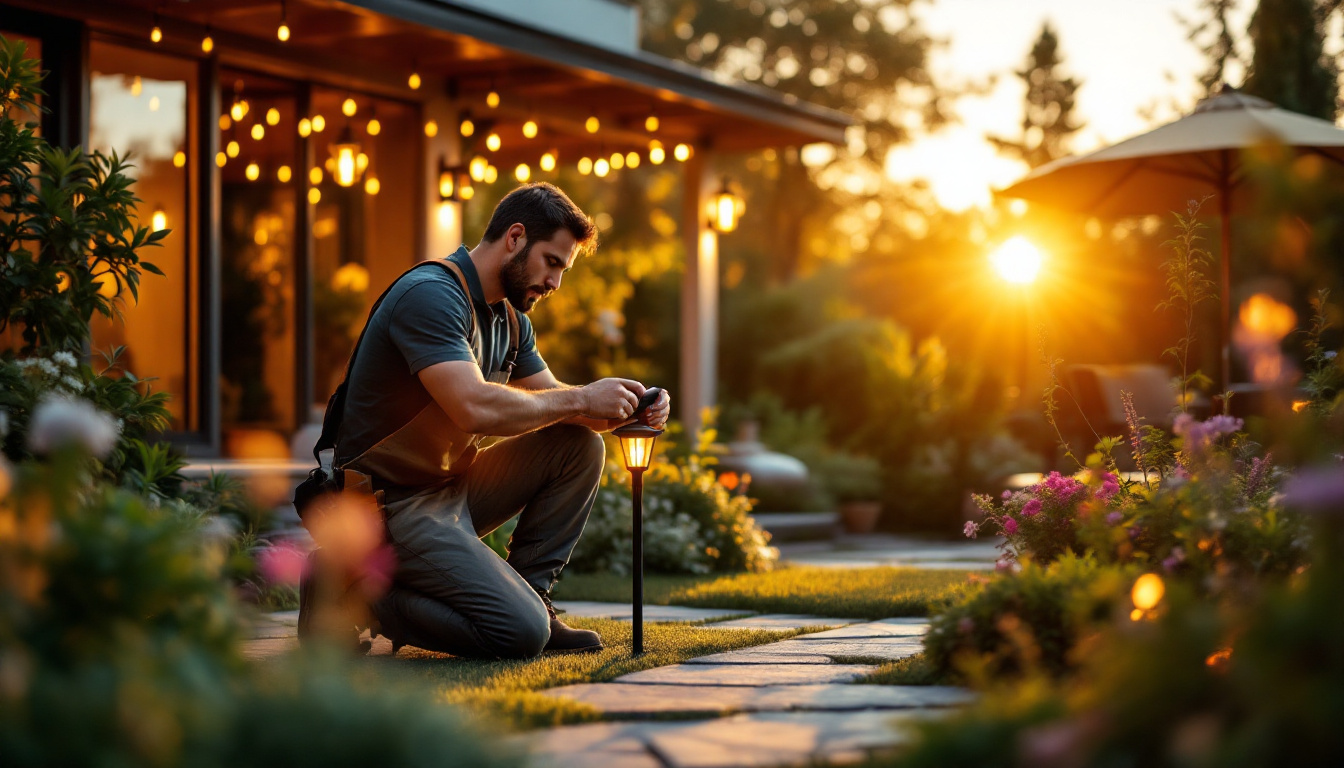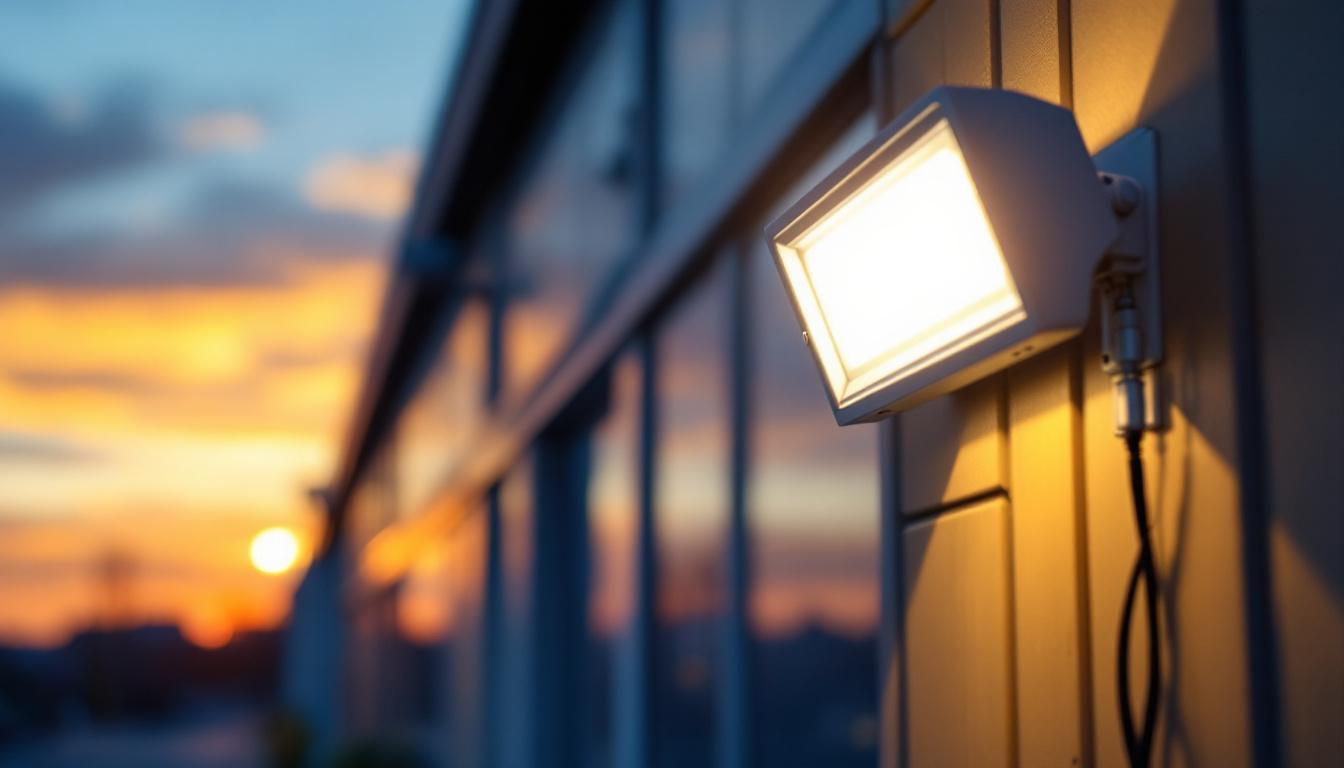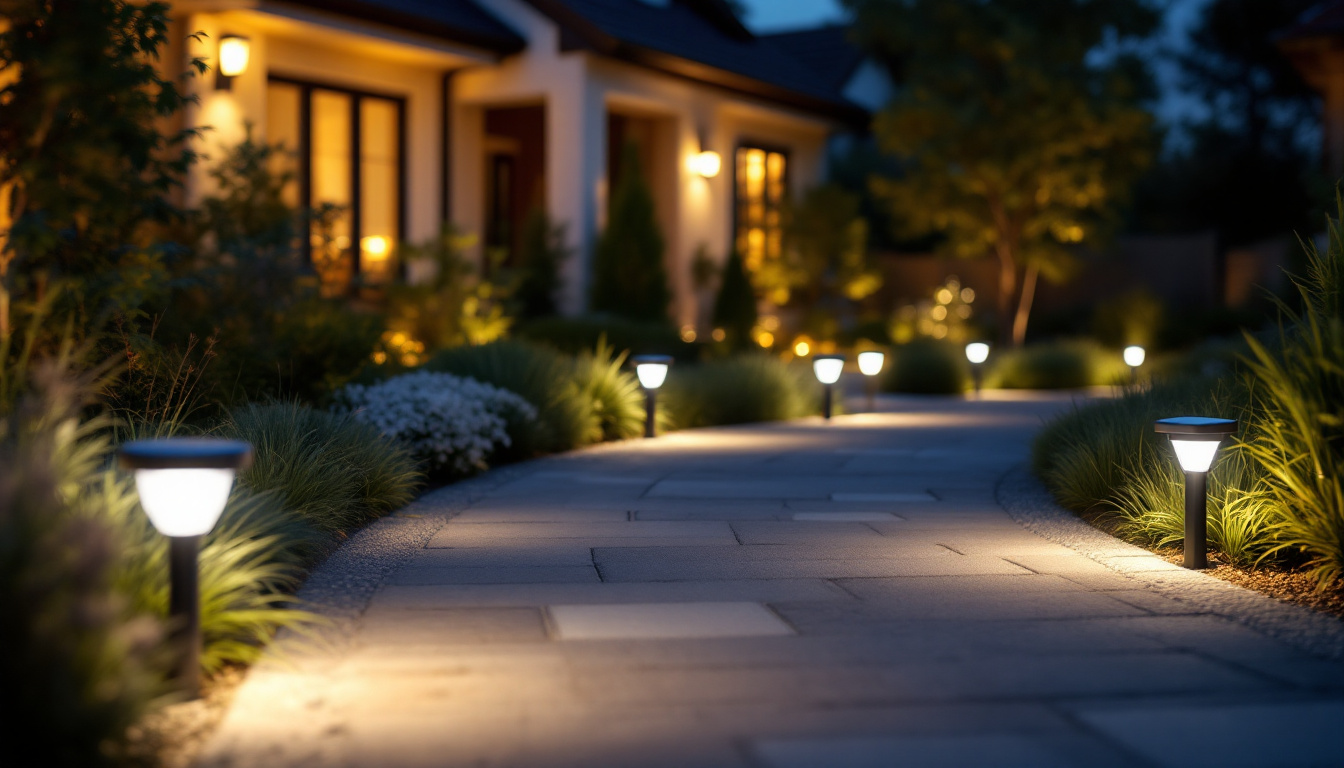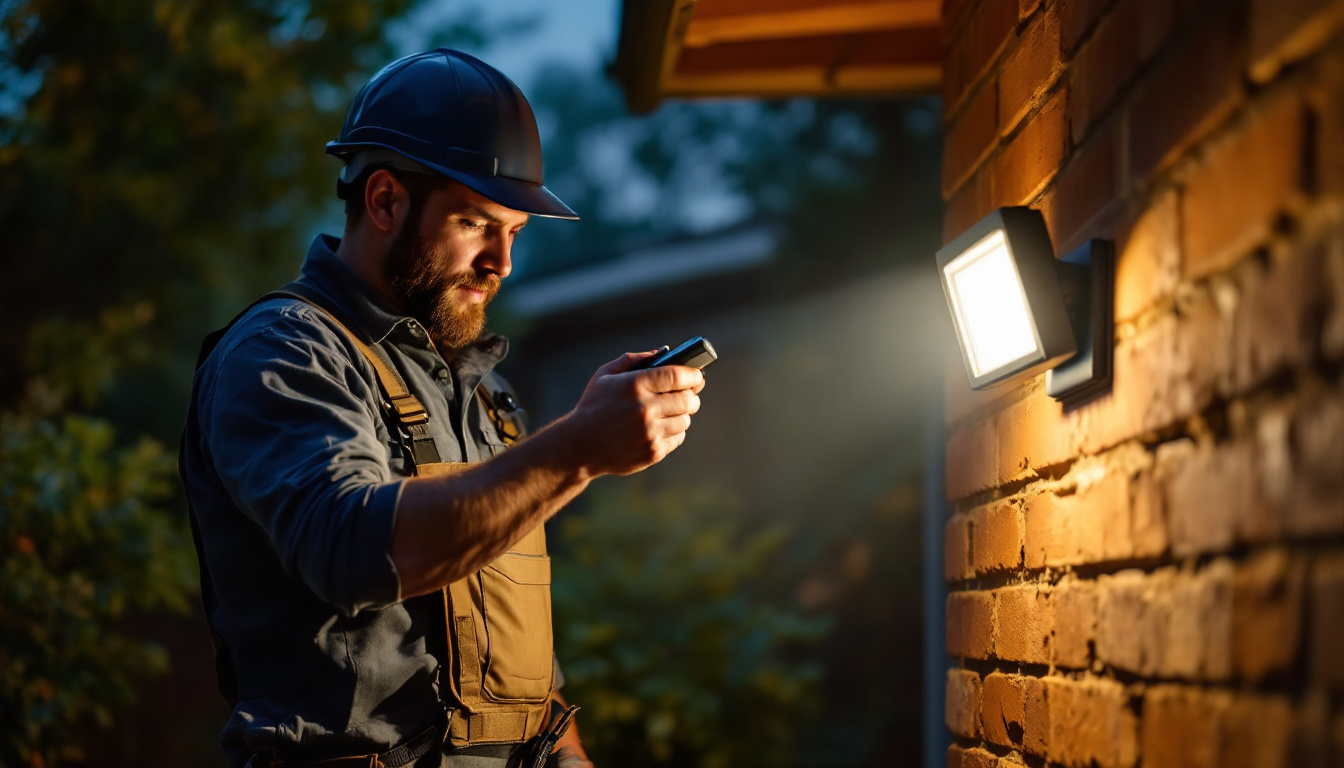
Outdoor Solar: Expert Advice for Lighting Contractors
As the demand for sustainable and energy-efficient solutions continues to grow, outdoor solar lighting has emerged as a popular choice among homeowners and businesses alike. For lighting contractors, understanding the intricacies of solar technology, installation techniques, and maintenance practices is essential to effectively meet client needs. This article provides expert advice tailored specifically for lighting contractors looking to excel in the outdoor solar market.
Before diving into installation and design, it is crucial for lighting contractors to grasp the fundamental principles of solar technology. solar lighting systems convert sunlight into electricity, which powers LED fixtures. This section will explore the components and functionality of these systems.
A solar lighting system typically consists of several key components: solar panels, batteries, LED fixtures, and controllers. The solar panels capture sunlight and convert it into electrical energy. This energy is then stored in batteries for use during nighttime or cloudy days, ensuring consistent lighting. LED fixtures are chosen for their energy efficiency and long lifespan, while controllers manage the flow of electricity, optimizing performance. Additionally, some systems may include sensors that detect ambient light levels, allowing for automatic activation and deactivation of the lights, which enhances energy savings and prolongs battery life.
The process begins with solar panels absorbing sunlight, which generates direct current (DC) electricity. This electricity is sent to the batteries, where it is stored until needed. When darkness falls, the controller signals the LED fixtures to turn on, drawing power from the batteries. Understanding this cycle is essential for contractors to troubleshoot issues and explain the benefits to clients. Furthermore, advancements in solar technology have led to the development of hybrid systems that can integrate with traditional power sources, providing an additional layer of reliability. This flexibility allows for uninterrupted lighting even during extended periods of inclement weather or when solar generation is insufficient.
There are various types of solar lighting solutions available, each suited for different applications. Pathway lights, floodlights, and decorative fixtures serve distinct purposes and can enhance outdoor spaces in unique ways. Familiarity with these options allows contractors to recommend the best solutions for their clients’ specific needs. For instance, solar pathway lights are ideal for illuminating walkways and gardens, enhancing safety and aesthetics, while solar floodlights can provide security lighting for larger areas, such as parking lots or backyards. Additionally, solar decorative lights can add a charming ambiance to outdoor gatherings, showcasing the versatility of solar technology in enhancing both functionality and beauty in outdoor environments.
Proper installation is critical to the performance and longevity of solar lighting systems. Lighting contractors must adhere to best practices to ensure optimal results. This section outlines key considerations during the installation process.
Before installation, a thorough site assessment is essential. Contractors should evaluate the location for sunlight exposure, shading from trees or buildings, and the overall landscape. This information will guide decisions regarding the placement of solar panels and fixtures. A well-planned layout maximizes sunlight capture and ensures effective lighting coverage. Additionally, it is beneficial to consider the seasonal variations in sunlight, as certain areas may receive more direct sunlight during specific times of the year. This can influence the performance of solar lighting systems, particularly in regions with significant seasonal changes.
When it comes to mounting solar panels and fixtures, stability and angle are paramount. Solar panels should be installed at an angle that optimizes sunlight exposure throughout the year. Additionally, fixtures must be securely mounted to withstand environmental factors such as wind and rain. Utilizing high-quality mounting hardware and following manufacturer guidelines will enhance the durability of the installation. Furthermore, contractors should be aware of local building codes and regulations that may dictate specific mounting practices or materials, ensuring compliance and safety in the installation process.
Proper wiring and connections are vital for the functionality of solar lighting systems. Contractors should ensure that all connections are secure and weatherproof to prevent moisture intrusion. Using the appropriate gauge wire for the distance between components can help maintain efficiency and reduce energy loss. Regularly inspecting wiring during maintenance checks will also contribute to the longevity of the system. In addition, employing color-coded wiring can help streamline troubleshooting and repairs in the future, making it easier to identify connections and potential issues. This attention to detail not only enhances the reliability of the system but also simplifies maintenance for the contractor and the property owner alike.
Even the best-installed solar lighting systems require maintenance to ensure optimal performance. Lighting contractors should be equipped with knowledge on routine maintenance tasks and troubleshooting common issues. This proactive approach not only extends the lifespan of the solar lights but also maximizes their efficiency, ensuring that they provide adequate illumination for the intended spaces.
Regular maintenance tasks include cleaning solar panels, checking battery health, and inspecting fixtures for damage. Dust, dirt, and debris can accumulate on solar panels, reducing their efficiency. A simple cleaning with water and a soft cloth can restore their performance. Additionally, batteries should be tested periodically to ensure they are holding a charge and functioning correctly. It’s also essential to check the connections and wiring for any signs of wear or corrosion, as these can lead to power loss or system failures. Seasonal inspections can help identify any potential issues before they escalate, allowing for timely interventions and ensuring that the lighting system operates at its best throughout the year.
Contractors should be prepared to address common issues that may arise with solar lighting systems. For instance, if lights are not turning on, it could indicate a problem with the battery, wiring, or the solar panel itself. Conducting a systematic diagnosis can help identify the root cause and facilitate timely repairs. Understanding these troubleshooting techniques will enhance a contractor’s reputation for reliability and expertise. Additionally, it is beneficial to familiarize oneself with the specific models and brands of solar lights being serviced, as different systems may have unique quirks or requirements. Keeping a log of past repairs and maintenance activities can also provide valuable insights into recurring issues, allowing contractors to develop more effective solutions and improve overall service quality. Furthermore, educating clients on the importance of maintenance can foster stronger relationships and encourage them to engage in regular upkeep, ultimately leading to more satisfied customers and fewer service calls for the contractor.
Design plays a crucial role in the effectiveness and aesthetic appeal of outdoor solar lighting. Lighting contractors should consider various factors to create harmonious and functional lighting designs.
Determining the appropriate illumination levels is essential for safety and aesthetics. Contractors should assess the specific needs of the area being lit, whether it be a pathway, garden, or parking lot. Utilizing a combination of different fixture types can help achieve balanced illumination and eliminate dark spots.
Outdoor solar lighting should complement the existing landscape and architecture. Contractors can recommend fixtures that align with the overall design theme, whether it be modern, rustic, or traditional. Incorporating decorative elements can enhance the visual appeal while providing functional lighting.
As technology advances, integrating smart features into solar lighting systems is becoming increasingly popular. Contractors should explore options such as motion sensors, timers, and remote control capabilities. These features not only enhance convenience but also improve energy efficiency by ensuring lights are only on when needed.
Effective communication with clients is essential for successful solar lighting projects. Lighting contractors should prioritize educating clients about the benefits and limitations of solar technology.
Clients often seek solar lighting solutions for their environmental benefits and cost savings. Contractors should be prepared to explain how solar lighting reduces energy consumption, lowers electricity bills, and contributes to a sustainable lifestyle. Highlighting the long-term savings on maintenance and replacement costs can further persuade clients to invest in solar solutions.
While solar lighting offers numerous advantages, it is important to set realistic expectations regarding performance. Factors such as geographic location, seasonal changes, and shading can impact the effectiveness of solar lights. Educating clients on these variables will help prevent misunderstandings and foster trust in the contractor-client relationship.
Staying informed about market trends and advancements in solar technology is crucial for lighting contractors. This section will explore current trends and the future outlook for outdoor solar lighting.
As more consumers prioritize sustainability, the demand for outdoor solar lighting continues to rise. Contractors who specialize in solar solutions will find a growing market for their services. This trend is driven by increasing awareness of climate change and the desire for eco-friendly alternatives.
Technological advancements are continuously improving the efficiency and effectiveness of solar lighting systems. Innovations such as improved battery technology, enhanced solar panel efficiency, and smart features are making solar lighting more appealing to consumers. Contractors should stay updated on these advancements to offer the best solutions to their clients.
The applications for outdoor solar lighting are expanding beyond traditional uses. From parks and public spaces to residential gardens and commercial properties, the versatility of solar lighting is becoming more recognized. Contractors should explore diverse applications to broaden their service offerings and tap into new markets.
Outdoor solar lighting presents a wealth of opportunities for lighting contractors. By understanding solar technology, adhering to best practices in installation and maintenance, and staying informed about market trends, contractors can position themselves as experts in this growing field. With the right knowledge and skills, lighting contractors can provide clients with sustainable, efficient, and aesthetically pleasing outdoor lighting solutions that meet their needs and exceed their expectations.
Ready to elevate your outdoor solar lighting projects with the highest quality products at unbeatable prices? Look no further than LumenWholesale, where we specialize in providing spec-grade lighting solutions that meet the rigorous demands of any installation. Say goodbye to middleman markups and hello to superior lighting that doesn’t break the bank. With our hassle-free bulk buying and free shipping, you can stock up on reliable, high-performance lighting effortlessly. Take the first step towards blending quality, affordability, and convenience into your lighting projects. Discover our extensive selection and secure the best value in wholesale lighting by visiting Wholesale Lighting at the Best Value today.

Discover essential insights and practical tips for lighting contractors on selecting and installing Rab LED wall packs.

Discover the latest proven methods for lighting contractors to enhance outdoor spaces with external solar LED lights.

Discover how street light posts play a crucial role in enhancing safety in urban and rural areas.

Discover the ultimate guide to sensor flood lights with insights from top lighting contractors.